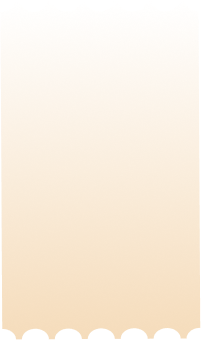There are following questions which will meet the requirement of the brief are given below:
An effective team is very important in carry out the objectives and goals of the team. For a team to be successful it is important for all team members to give their best performance. This report will help in understanding the ways to develop and manage a team. The report will help in understanding the features and different models of group performance. Further, the report will discuss different stages of team development and the barriers and conflict in team development. The report will also discuss the method of dealing with conflict building trust and accountability. The report will later discuss the method of promoting vision, skills and knowledges in team members. the report will also discuss about no-blame culture in team and benefit of it. Furthermore, the report will discuss different style of leadership and management.
You Share Your Assignment Ideas
We write it for you!
Most Affordable Assignment Service
Any Subject, Any Format, Any Deadline
Order Now View Samples
1.1 Define the key features of effective team performance.
A team is a group of more than two people who are come together in order to perform a job, task or to solve a critical problem (Mitchell and Golden, 2012). An effective team is formed by the positive leadership. An effective team will always work with coordination in order to attain a common goal. Following are the features of an effective team.
- An effective team will have a mutually agreed goals and objectives. All the team remember have a clear picture of their goals to be achieved.
- An effective team will have a good balance of persons who posses different skills, experiences, qualification.
- The key important features of an effective team the positive communication between the team members and with the leader (Truijen and et.al., 2013).
- The team is instructed and supervised by an effective leader.
- The team member express themselves openly and trust each other. The team members listen to other' s opinion.
1.2. Comparing the models that used to link individual roles and developing with team performance.
Team role is the tendency of behaviour in a team. With the better performance of team team, each team member has clear about their responsibility in team. There are different models that will help in understanding the individual roles in developing team performance.
Tuck man's team work theory:
This models explains that with the development of the team and its process, the relationship between the team members also increases. It gives different roles and responsibilities to each team members (Fransen, Weinberger and Kirschner, 2013). Following are the different stages in tuck-man's team development:
Forming: the team members are gathered. The process of task is planned under the guidance of leader. The team members are unaware about the goals and objectives of team.
Storming: Relation among the team member start developing. They have to face various challenges about the process and decisions taken. This is the stage where there is high risk for the conflict. This can result in loss of performance.
Norming: team members started coordinating with each other, effective communication are built. Basic rules are formed and responsibility of task are assigned to each other (Mathieu and et.al., 2015).
Performing: This is the final stage where team has full focused both on the task as well as on the team relation. Performance is delivered efficiently.
There is another theory which helped in understanding the individual role in team performance.
Get assignment help Australia from professional experts to score higher grades.
Bel-bin Team Roles:
This theory explained that there are nine cluster of individual behaviour in a team which are called team roles. Each team needs to access the nine team role behaviour in order to increase the increase the performance of the team (André, BaldoquÃn and Acuña, 2011). According to this theory the nine cluster of team roles are:
- The resource investigator
- The team worker
- The co-ordinator
- The plant
- The monitor evaluator
- the specialist
- The shaper of team
- The implementer
- The completer finisher
2.1. Analysing the stages of team development.
There are five stages in team development that are being discussed in Tuck man's team development theory. They are:
Forming: This is the first stage where team members first meet each other. The leaders introduced them to each other. The team members are unaware about the goals and objectives of the team. This stage requires high guidance from the leader.
Storming: The team member shares ideas and opinion on the purposes of the task and roles. this is the very crucial stage as the there is high risk of conflict between the team members over the difference in opinion and roles (Colombini and McBride, 2012). The relation can be built and broken in this stage. Th leader has to effectively manage the team.
Norming:in this stage the team members begun to work effectively. They started coordinating with each other. Effective communication is there, team members started discussing over the process. The team can take decisions without the support of leaders.
Performing: This is the final stage where, the team performance is on high level. The team members are focused on achieving the target and goal of the team. The team members are built effective communication and trust on each other.
2.2. The barriers to success of the team and the solution to overcome the barriers.
There many barriers which hampers the successful team development. It can also affect the performance of the individual team members and the quality productivity of the team. Followings are the barriers for success of team:
Lack of communication: lack of communication can result in toxic foe the team performance. The members who have no effective communications suffers with poor performance. leader should be able to identify the communication level and take effective measures like daily meetings formal or informal will help in overcoming this barriers.
Planning for team: The team with the poor communications also suffers from effective planning for the team (Hillson and Murray-Webster, 2017). The conflicts and lack of trust on each other hinder the process of making effective planning for team. The team leader should preplanned about the roles, process and task that to be assigned. The leader should manage the conflict amongst them so that effective decision can be taken.
Unclear goals: a team is created in order to achieve goals within the workplace. These goals can be for a specific project. When goals are not communicated to the team members clearly. The team cannot work properly as they are unaware what they are doing for. The leader should clearly picture the target and goals that needs to be achieved.
2.3. Analysing the effect of group norms on team development.
Group norms are the basic guidelines and the code of conduct that helps in performing group activity and operations effectively. These norms are formed by the group members informally as they understand the behaviour of the group members and their behaviour. Types of group norms are as follows:
Behaviour norms: this defines the guidelines of the members day to day behaviour. It includes punctuality, completing task within a time frame. This norms expect some professionalism from the members. It helps in increasing their focus towards their goals.. Lack of professionalism can affect their performance and overall productivity of team.
Work Norms: It helps in regulating the performance and productivity of an individual team members (Williams, 2011). Works norms set a standard of productivity that helps the team leader to evaluate the good performer and lower performer. It helps in enhancing the performance of the team members. These work norms are includes loyalty toward job, relationship between members and with the leaders etc.
2.4. Difference between beneficial conflict and destructive conflict.
The differences between beneficial and destructive conflicts are:
|
Beneficial conflict
|
Destructive conflict
|
|
Beneficial conflict help in increasing different ideas and views of the team members.
|
It hinders the performance of the group member
|
|
It helps in increasing the productivity and morale of the team members.
|
It leads to decrease the morale of the group members.
|
|
This is win-win situation as both the parties in conflict will get benefit.
|
This will create a frustration as demands of both the parties do not get fulfilled.
|
|
There is honest communication between the members and have respect for their opinion.
|
There is no honest communication and often reject the solution of others.
|
2.5. Different methods of dealing with conflicts in a team.
There are many responses to conflict within a team. Some of the methods of dealing with conflicts in a team are:
- Paying careful attention to the other person's concern. It will create a positive professional culture and healthier relationship.
- Conflict can be avoided by following the proper hierarchy.
- A leader should take disciplinary or corrective action for avoiding and dealing by proper communicating to the employees to improve the conduct and performance.
- Leaders should list out the reason or facts and assumptions of the arguments. Examining the information in group helps in preventing the arguments.
- Effective listening of each parties perception on conflicts.
2.6. Comparing methods of developing and establishing trust within the team.
 As according to the Thomas, K. W. and Ra-him, the five conflicts management styles are:
- Accommodating: This approach is effective when the other party in conflict is expert or has a better solution. This approach demands high degree of cooperation.
- Avoiding: It is simply avoiding the situation that may result in conflict. This approach works when the issue is sensitive, and there is no chance of winning. It is also effective when conflict can leads to high cost.
- Collaborating: in this approach both the parties in conflicts unites to achieve the goals of both. It can be effective in complex scenario (5 Conflict Management Styles at a Glance, 2018). It involves re-framing of the challenge and listen to every others ideas.
- Competing: this approach is also called win-lose situation. In this approach the party don't want to cooperate, this is effective when there is an emergency and no time to take the conflict further.
- Compromising: it is lose-lose situation where no side achieve from the conflict what they want. It is appropriate for the situation where, temporary solution is required.
3.1. Evaluating the ways of promotional shared vision within a team.
Successfully communicating the vision to the team members helps in providing the encouragements for the team member to accomplish big. The ways through which the team vision can be promoted is:
- The leader should be clear about the vision, what should be achieved. The vision should be visible to the team member. A clear vision will team member to understand what the objectives are that has to be achieved.
- The vision should set the bar high, so that the employees improve and increase their performance in order to achieve the vision.
- There should be a specific purpose that required in order to achieve the vision of the team (Rahim, 2017). The team should know what was the benefits of achieving the vision, it will help to give them a purpose.
- Effective communication to share the vision should be there, each team member should know the vision of their team, so that they can work to achieve it.
3.2. Approaches that encourage sharing of skills and knowledge between team members.
The approaches that encourages sharing of skills and knowledgewith the team mebers are:
- The team members can be encouraged, when the leader will start sharing hid skills and knowledge. As knowledge sharing stated from the top, the team members will not feel that they are giving their competitive edge to others.
- Leader can encourage them by providing guidance to share their skills through designing documents templates that can be used to enter information at the knowledgable base (Levi, 2015).
- Team members will start motivating each other and share their knowledge and skills once they formed an effective professional relationship. Leader should take initiative in building relationship in team.
4.1. Defining the meaning of no-blame culture.
The culture that is built on the positive belief that the team members are fully participating in the high performance team, and have no intention of doing low quality of job. In no-blame culture team members are encouraged to speak openly about their problems and mistakes. It encouraged the team members to be honest and open about their problems. No blame culture focuses on the future and allows the team members to grow and learn from the mistakes.
4.2. evaluating the benefits of No-blame culture.
The benefits of the no-blame culture are:
- it helps in building a cooperative team
- It gives positive feeling to the team member that his problems and mistakes are being listened.
- It creates a positive and safe working environment (Roueche, Baker III and Rose, 2014).
- It helps in in increasing the motivation in the team members and helps in retain them.
- It helps in allowing the open discussion and disclosure of the problem and mistakes.
4.3. how system and processes can be used to support no blame culture.
The process that can be used to support no blame culture in team are as follows:
- Different strategies should be made by leaders to encourage the team members to speak openly about the problem in order to resolve it.
- The team leader should focus on finding the ways to solve the issue and problem rather than blaming the person responsible (Douglas, 2013).
- There should be an effective and systematic approach in the team for the problem solving in team.
- The behavioural norms should be implemented properly which help in increasing the communication.
4.4. Describe the strategies for managing risk with no blame culture.
The leader should identify the risk that are associated with the no blame culture. Through an effective no-blame culture, the leader can know about the problems in the team and in working condition. The leader has to done a risk-assessment in order to evaluate the risk that can be happened with the problems, and issues. The leaders should provide proper training to the team members in order to avoids the mistakes. And can increase the performances of the team members. Management system and approaches should be implemented in order to encourage positive team working.
5.1 The different style of leadership and management.
Most leaders generally stick to one style of leadership. But with different situations arising in the team , a leader has to change his approaches or style. Following the different leadership style of leaders for effective management of team:
- Directive: the leaders in this style has to instruct his team and establishing performance objectives. And adept at providing skills to clarify their responsibility.
- Supportive: the leader has to show concern for team members and support them. The leader treat them with dignity and respect (Gorini, Miglioretti and Pravettoni, 2012).
- Participative: in this style, the leader also participate in the task and decision making process. The leader try to know the view and ideas of team member in this style.
- Achievement oriented: the leaders always encourage the team to perform better, he makes them believe that they potential to perform and achieve the team goals and objectives.
CONCLUSION
By summing up the above report, it can be concluded that team development and management is very important in order to increase the productivity. The present report has discussed about the attributes of effective team performance. The report has concluded the stages , barriers and conflicts in team development. The report has also concluded about the method of dealing with conflicts. Further, the report has evaluates the promotion of shared purposes within the team. The report has concluded about no-blame culture in team.
Â
You may also like to read: Developing Individual, Teams and Organisation
Amazing Discount
UPTO55% OFF
Subscribe now for More
Exciting Offers + Freebies










